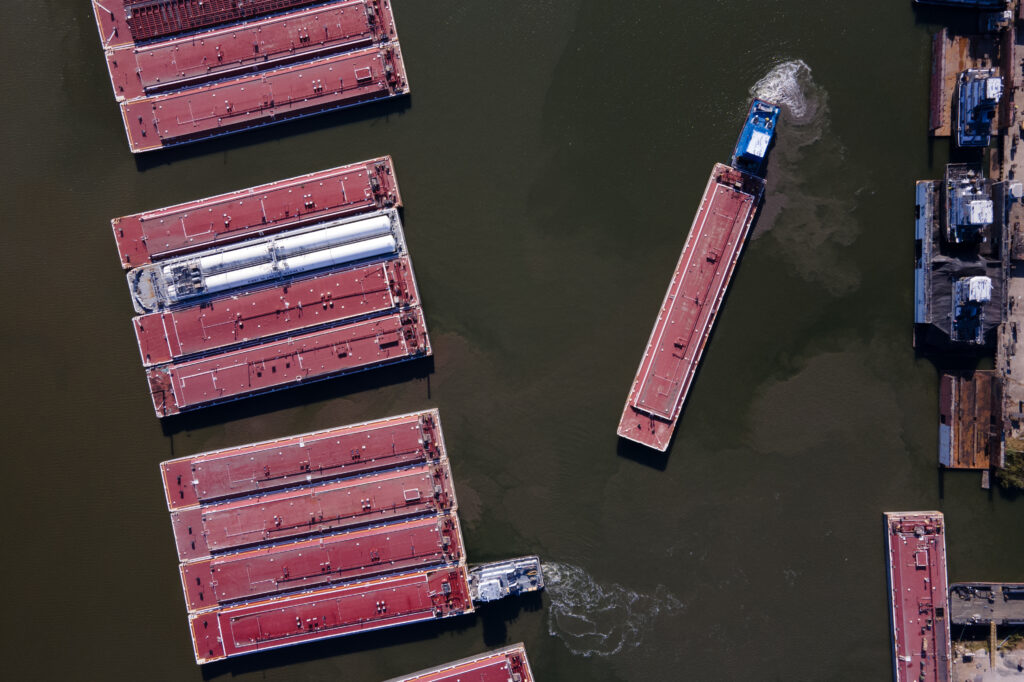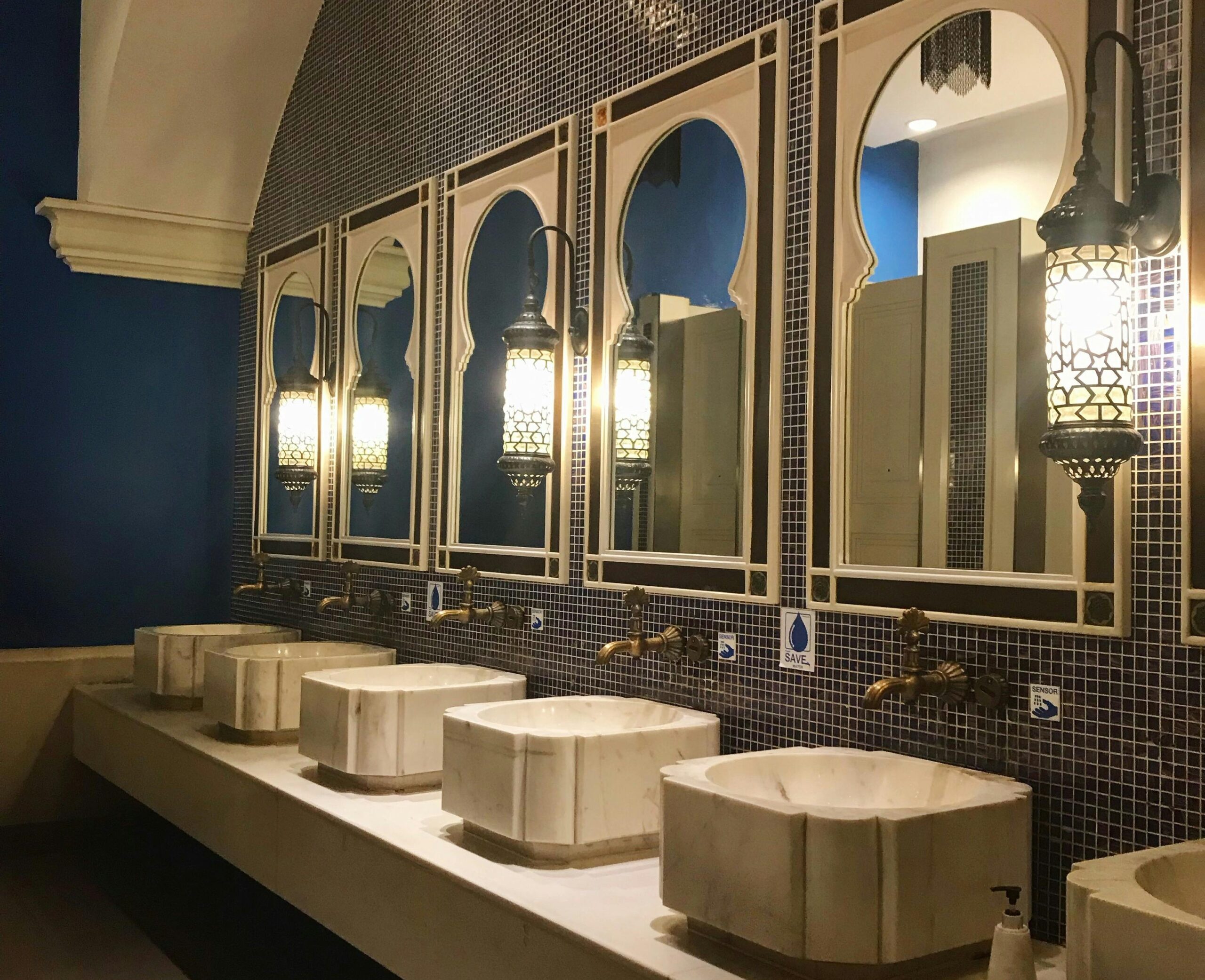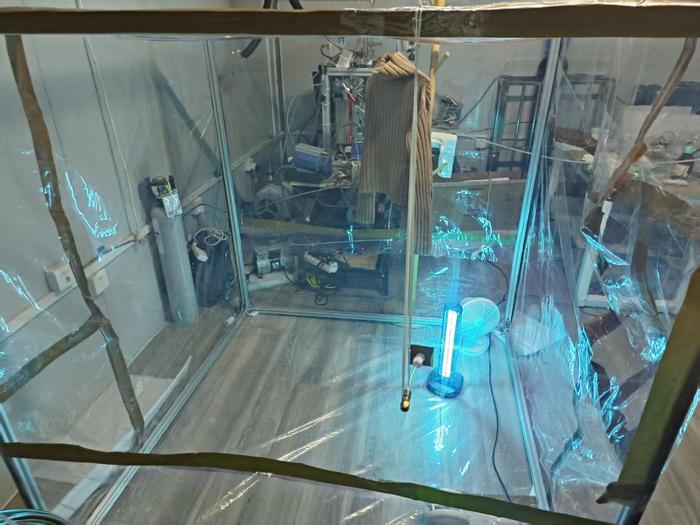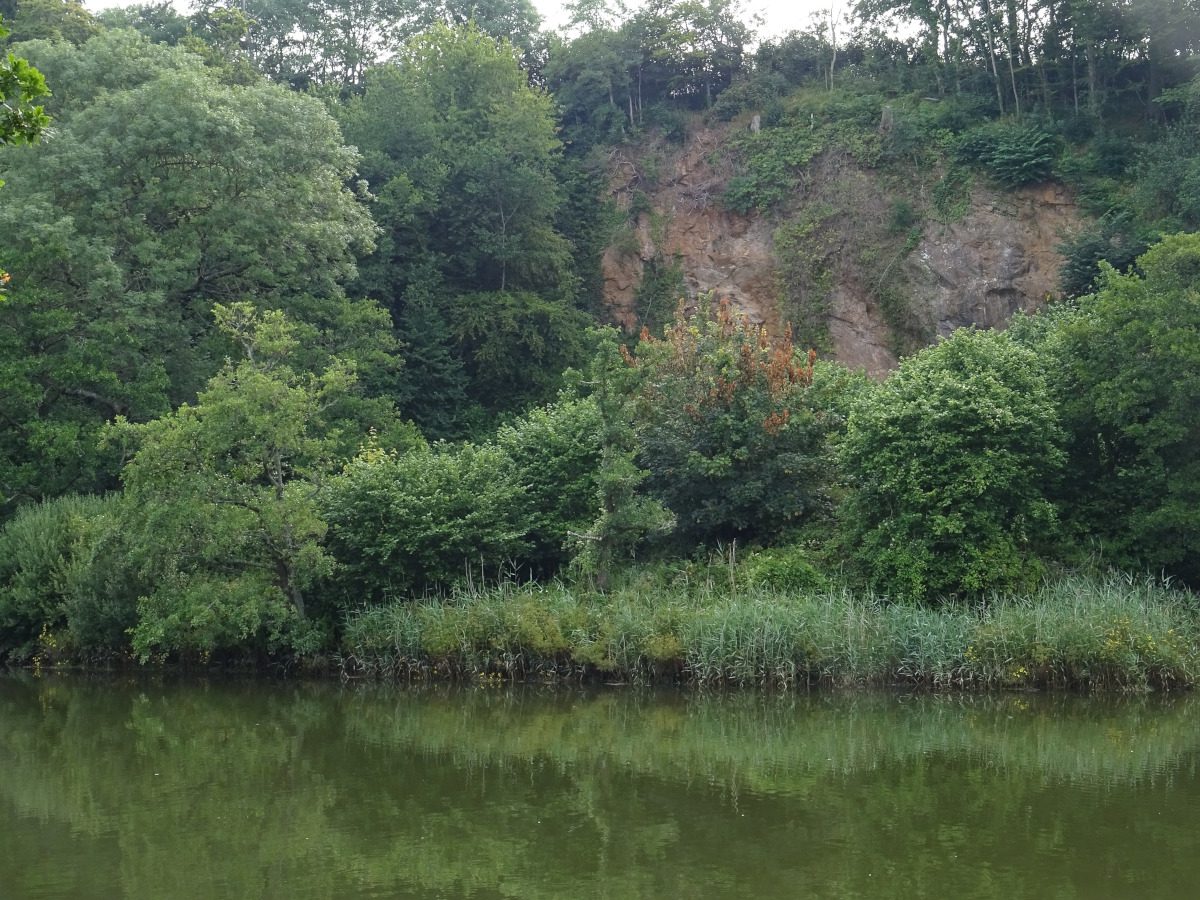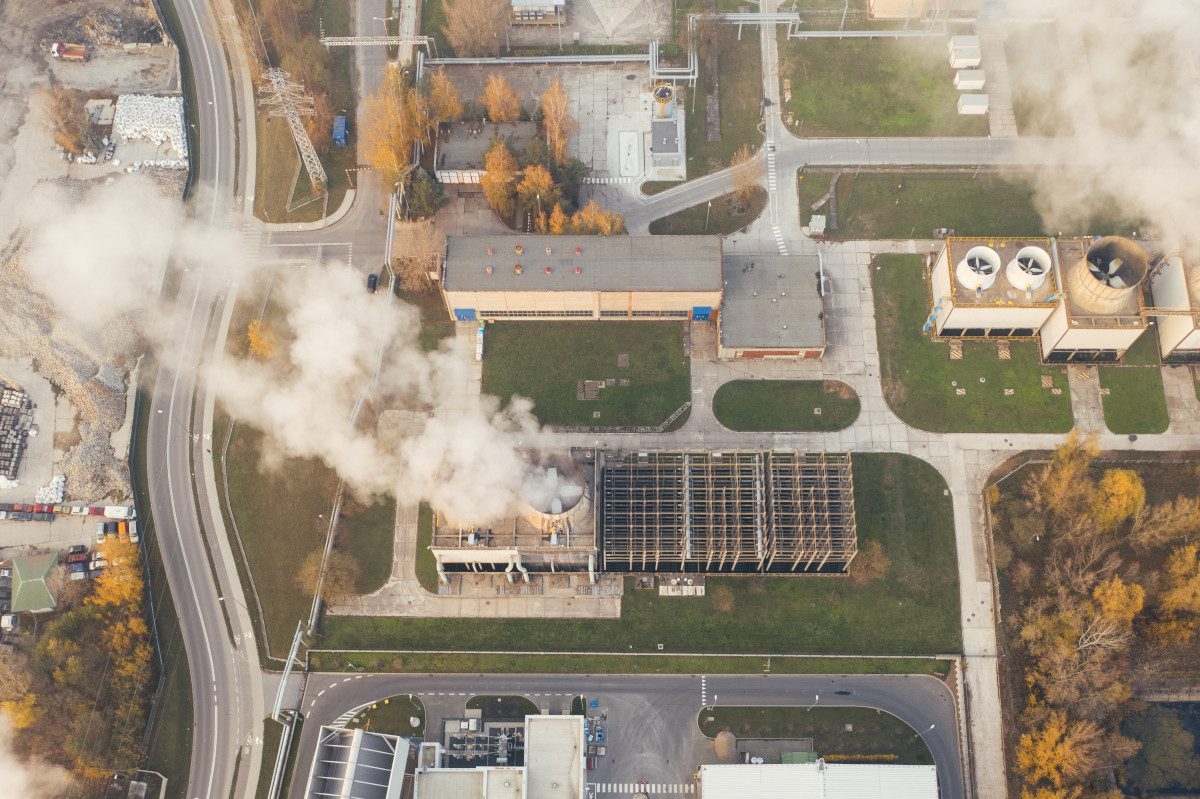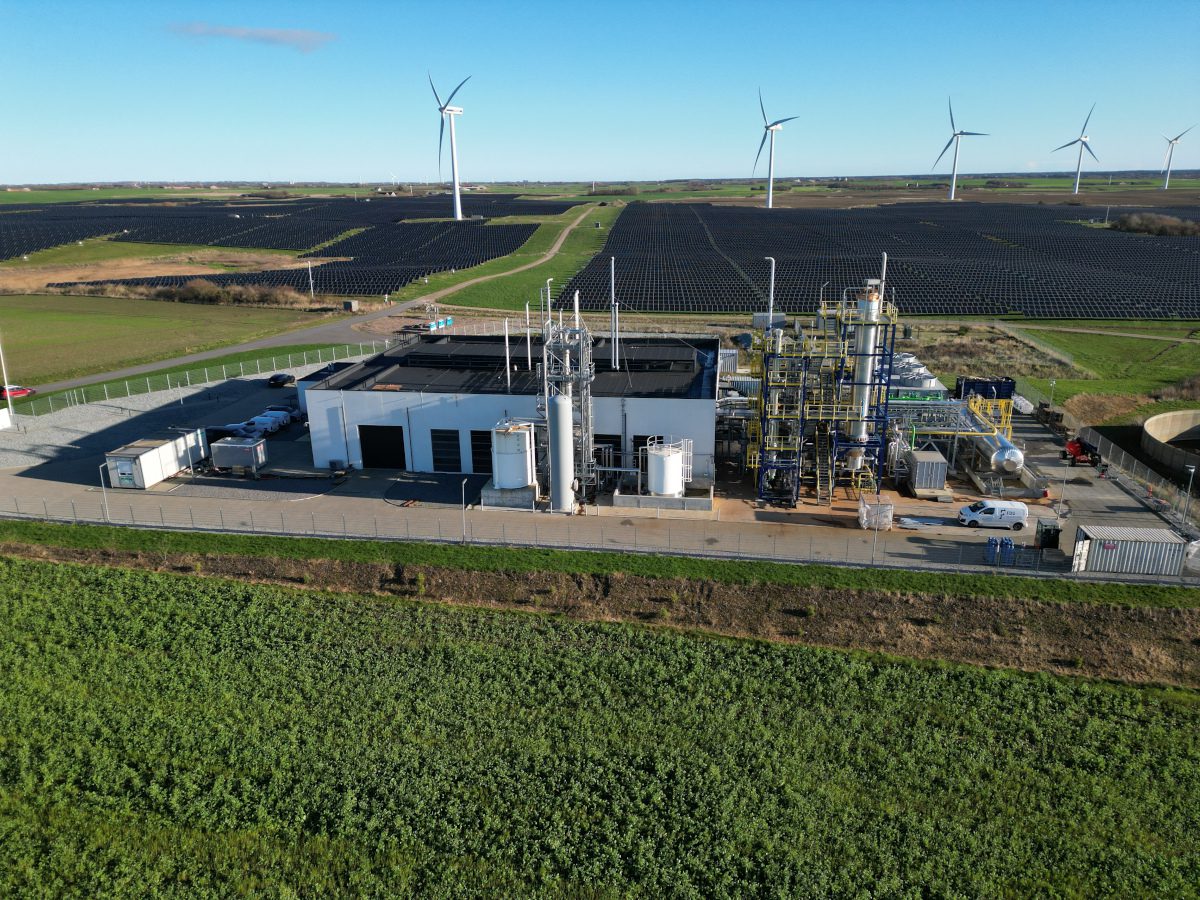On a dreary afternoon in January, a geyser of oily water shot over the fence of an oil and gas company in the Los Angeles neighborhood of Wilmington, splattering the street, cars and a local coffee shop with petroleum just a block away from Ashley Hernandez’s house.
The frightening spectacle was just the latest in a long line of blowouts, spills and explosions to contaminate a community long dominated, and sickened, by oil drilling in the neighborhood.
Hernandez, an organizer for the nonprofit Communities for a Better Environment, was three or four years old when her parents moved from the San Fernando Valley, north of Los Angeles, to Wilmington, a heavily industrialized neighborhood at the city’s southern edge. One of her earliest memories in the family’s new home was seeing her mom strap on an odd contraption while gasping for air. Hernandez grew up thinking it was normal to use a nebulizer every day. She thought it was normal to endure the headaches, nosebleeds and heart palpitations she and so many of her classmates always seemed to have. She thought it was normal to lose so many relatives and loved ones to cancer.
Now 31, Hernandez wishes she knew then what she knows now.
We’re hiring!
Please take a look at the new openings in our newsroom.
See jobs
Her community straddles the Wilmington Oil Field, the third largest field in the country, where energy companies have recovered more than 2.5 billion barrels of oil and operate the largest concentration of active wells in Los Angeles. Residents of this mostly working-class Latino neighborhood live, work and play near more than 2,300 wells, including hundreds left idle. The majority of wells sit within 650 feet of residential areas, like those crowded into the block across from the Hernandezes’ house.
Oil operations routinely release toxic gases that cause respiratory disorders, cancer and numerous developmental and reproductive problems, studies show. They also emit millions of tons of the climate super-pollutant methane.
“We have a very peculiar cough in my family,” said Hernandez, who has worked with Communities for a Better Environment since high school. “We’re always coughing, always clearing our throats,” she said. “Doctors call it the Wilmington cough.”
It wasn’t until Hernandez went to a meeting after school one day that she realized oil wells surrounded the community baseball park in the block across the street. She knew there was some sort of business there, but she couldn’t tell what it was because a wall blocked her view. “It was at that meeting that I learned, whoa, I’m living next to a toxic site.”
Warren Resources, an independent crude oil developer, manages close to 220 wells in that block, state records show. More than 50 sit idle. The idle wells produce no oil, but can release harmful pollutants that contaminate the air, soil and groundwater and emit even more methane than productive wells.
With the easy-to-exploit oil reserves largely gone, energy giants like Chevron have left the Los Angeles Basin. Smaller operators now dominate the region, often using more polluting methods like acidization, which injects acid-based solutions with highly toxic chemicals into wells to extract the dregs.

Costs to plug idle wells vary, state estimates show, from an average of $87,000 per well in the Central Valley to $923,200 per well around Los Angeles, where urbanization increases expenses.
Instead of spending the money to remediate marginal sites, most operators across the state have avoided plugging requirements by paying a nominal fee or offloading their bad assets to smaller companies that don’t have the means to properly “plug and abandon,” or clean up the sites, said environmental health expert Kyle Ferrar, Western Program director for the nonprofit FracTracker Alliance.
As a result, the inventory of leaky, languishing wells has increased more than 32 percent between 2018 and 2021, Ferrar found in a new analysis.
“Wells that were drilled before 1980 have a much higher risk of leaking and having issues down the line,” Ferrar said, noting that a well’s condition quickly deteriorates with inactivity.
An average idle well leaks one-third of a ton of methane each year, in addition to a noxious cocktail of air toxics and carcinogens, Ferrar said. Using high-tech imaging gear, he detected dozens of idle wells in California leaking at dangerous levels last summer.
These leaks occur industry-wide and will continue to get worse as well-site infrastructure ages and decays, Ferrar said. “The top priority is to get these wells plugged.”
Tightening Rules on Idle and Marginal Wells
Until relatively recently, the state didn’t even require inspections or maintenance on idle wells. Now Assembly Bill 1866, introduced in January, would ditch the old “pay to idle” scheme—where operators paid as little as $150 to keep a well idle—in favor of requiring operators to more than double the proportion of wells they plug each year.
“There have been examples in my district where large oil operations have sold their wells to operators that aren’t financially sound,” said AB 1866 author Gregg Hart (D-Santa Barbara). “We need to proactively create a process that gets the oil companies to abandon these oil wells properly, on a schedule, and protect California.”
Hart’s bill prioritizes plugging wells within 3,200 feet of sensitive sites like homes, schools and hospitals. Another bill moving through the Legislature would fine oil companies $10,000 a day for operating low-producing wells near these sites.
More than 2.7 million Californians, primarily people of color, live within 3,200 feet of an oil well, including some 12,000 idle wells.
Most of California’s roughly 60,000 active wells are producing very low volumes of oil at marginal profits, Ferrar said. He estimated that just 4 percent of the state’s 1,200 operators submitted a plan to plug their wells, suggesting a looming crisis.
AB 1866 would accelerate the timeline for plugging abandoned wells, which public health experts like Ferrar see as vital to protecting vulnerable residents.
At a hearing for AB 1866 in March, oil industry lobbyist Sean Wallentine argued that companies are “doing an excellent job plugging wells” and that many idle wells are either assets that could come back into production or be used to hold hydrogen for renewable energy or sequester captured carbon. The bill would shut down tens of millions in funding from operators to plug wells, and threatens to “break a program that works just fine,” said Wallentine, who handles government affairs for the trade group California Independent Petroleum Association.
Hart disagrees. The vast majority of idle wells were drilled years ago with outdated technology and standards that make them ill-suited for carbon or hydrogen storage, he said. And at current plugging rates, it’s going to take over a century to get through the backlog, Hart said. “I don’t think anybody can look at that scenario, and say, ‘That’s a successful outcome and a program that’s working.’”
In any case, many idle wells have been abandoned for more than a decade, he said. “If they were financially viable, the operators would be operating them.”
A recent analysis shows that the costs of plugging California’s idle wells dwarfs the amount industry has set aside for the job.
Decommissioning these sites could cost more than $20 billion, a 2023 report by the financial think tank Carbon Tracker found. That’s billions more than projected industry profits, the report found—and 800 times more than the $25 million Wallentine said was set aside—leaving taxpayers stuck with a daunting bill.
“We’ve always assumed oil companies would have money when it came time for decommissioning to pay for the costs,” said Dwane Purvis, a petroleum engineer who authored the Carbon Tracker report.
But that didn’t happen because most oil companies owned assets only in California, which didn’t see the revival in production, and profits, that shale reservoirs in other states brought. And now, California taxpayers are very likely to be on the hook for billions in cleanup costs, Purvis said.
Together, Chevron and Aera Energy manage more than 18,000 idle wells, the most in the state, Ferrar found, with thousands left idle at least eight years.
Chevron is working to permanently plug idle wells according to applicable regulatory requirements and internal guidelines, said spokesperson Paula Beasley. “We will continue to focus on safely plugging idle wells and ensuring that the taxpayers are not left responsible for Chevron’s obligations.”
An Aera spokesperson declined to comment.
Hart said he’s open to working with the oil industry to find a practical path to clean up the state’s idle wells. “But there’s an urgency here, because there is a huge potential price tag for consumers in California that we want to avoid.”
Surrounded by Fossil Fuel Threats
On particularly bad air days, Hernandez can’t be sure whether to blame the oil wells across the street or the refineries surrounding Wilmington. Or maybe it’s the deadly fumes coming from the region’s notoriously heavy traffic and diesel-spewing trucks that service the Los Angeles and Long Beach ports, the largest fixed source of pollution in Southern California.
In the summer of 2022, Ferrar documented a Warren Resources combustor, designed to burn vapor waste from drilling operations, sending plumes of methane and cancer-causing gases across the fence into Henandez’s neighborhood.
“There are tools we can be using to protect communities in the city of Los Angeles that we’re not using equally across the city,” said Richard Parks, president and founder of the faith-based nonprofit Redeemer Community Partnership.


Drilling operations in wealthier, whiter West LA neighborhoods are enclosed and disguised to look like office towers, art installations, even synagogues. But job sites in Wilmington and South Central LA, where Park lives, are wide open, allowing toxic emissions to flow from the job site into adjacent homes, he said.
And more and more research shows that residents are paying for this disparate treatment with their health, Parks said. The closer you live to a drill site, the higher your blood pressure and the higher your risk of losing lung capacity, he said. Researchers have even found a toxic signature of oil and gas extraction.
Luis Martinez, an organizer with the nonprofit Fossil Free California, grew up about a mile northwest of Hernandez. “I knew from a very early age that we neighbored a lot of pollution,” he said.
Martinez recalled smelling something horrible, like a rancid cocktail of rotten eggs, manure and gas, every single day at school. Martinez and his friends tried to laugh it off. They stopped joking as they got older and traded notes about classmates with asthma and nosebleeds and relatives with cancer. Martinez lost his mother to breast cancer ten years ago, when he was 17 years old. She was only 51.
“We’re dealing with poor air quality conditions from the fossil fuel industry itself, and then we’re dealing with all the environmental impacts of worsening climate change conditions that the fossil fuel industry has facilitated in the first place,” Martinez said.
He recalled summers when it seemed like the power went out every week during a heat wave, leaving families sweltering without air conditioning or fans.


Over the past decade, young Angelenos like Hernandez and Martinez started connecting the dots between chronic health problems and the polluting oil operations in their backyards. They mobilized their communities and joined forces with public health, environmental and faith groups to convince first the Los Angeles City Council and then the County Board of Supervisors to ban new drilling and phase out existing operations. They spent years working with other community groups to get a statewide 3,200-foot buffer zone between neighborhoods and drilling operations passed in 2022.
The oil industry fought back on every front. In January 2023, Warren Resources and its affiliates sued the city to overturn its ordinance a month after it passed. A trio of oil developers with 162 wells, nearly a third idle, sued to block the county ordinance a few months later. Still another group of neighborhood oil producers and their allies spent more than $30 million to get a referendum to overturn California’s historic buffer zone law on the November ballot.
But organizers like Hernandez have no intention of backing down. There’s too much at stake.
“My community has been overburdened beyond its limit,” Hernandez said, vowing to defend the Los Angeles ordinances and state setback law.
“Go put this out in your neighborhood if you want it so much,” Hernandez said, speaking to the oil industry and its allies. “But Black, brown and Indigenous people are saying, ‘you can’t do that in our communities anymore.’”
Showered in Crude Oil
Around 1:30 on a rainy afternoon in January, a geyser of murky brown liquid surged over the fence at Warren Resources, showering sidewalks, cars and a neighborhood coffee shop with oily crude. About two barrels of oil burst from an old underground pipeline designed to move oil from wells to a collection point, state records show. The heavy rains may have sent an “undetermined” amount of oil into a public storm drain that empties into a stream called the Dominguez Channel.
Hernandez, who keeps her windows closed to stop the fumes, learned about the incident when her sister called to let her know something was going on across the street. She checked a local news alert app and found videos of what she said looked like a 30-foot waterfall.
The spray, it turned out, contained more than 5,000 gallons of crude oil and toxic wastewater, called produced water.
“It was ridiculous,” she said. “I just know that what happened in Wilmington, had it happened in Palos Verdes, had it happened in Beverly Hills, some immediate action would have taken place. But in Wilmington, where we have brown, Indigenous, Black folk, Asian folk living here, we did not get the action that was needed.”
Ten days later, a resident saw crude oil seeping out of the ground in a residential alley a few blocks from the site where the pipe burst. A cleanup crew showed up in full hazmat gear, as worried residents looked on. There were so many underground pipelines in the area, owned by various companies, that it took a day to figure out the oil was coming from an out-of-service Chevron line. About 40 gallons of crude had covered the alley by then.
The release was stopped and remedial actions quickly deployed, said Chevron spokesperson Christine Dobbyn. Chevron, which ceased its Wilmington operations in the 1990s, is working with state regulators to take care of additional cleanup as necessary, she said.
“The first step in protecting communities is giving them a forum to voice their concerns and keeping them informed about the hazards associated with the oil and gas industry.”
“Having these two oil spills in Wilmington just a couple of weeks apart really underscores just how unfortunately common this is in environmental justice communities like Wilmington,” said Tyler Earl, a senior attorney with Communities for a Better Environment. “Companies basically just leave this infrastructure behind without cleaning it up.”
Earl was shocked to discover that Warren had completely omitted the facility with the crumbling pipe that doused Hernandez’s neighborhood in a spill response report submitted to state officials. “They’ve operated it for nearly 20 years and it’s one of the main parts of their drilling.”
Earl, who uses the pronoun they, is still trying to figure out what residents were exposed to when that pipe burst. Oil companies have to maintain safety data sheets for crude oil and produced water because they can endanger workers. Why then, they asked, isn’t the same safety information provided to nearby residents and businesses that had produced water and crude oil sprayed onto their cars and tracked into their restaurants?
Warren Resources did not respond to questions about why it omitted the facility with the leaky pipe or the steps they’re taking to inform and protect nearby residents.
“The first step in protecting communities is giving them a forum to voice their concerns and keeping them informed about the hazards associated with the oil and gas industry,” Earl said.
Communities like Wilmington just get a flyer when a spill happens, whereas wealthier, whiter communities get town halls, press conferences and direct access to decision makers, Earl said. “It always comes back to environmental racism.”
For months, Hernandez has been trying to convene a public forum to help community members understand the risks of the recent spills by meeting with Warren and the alphabet soup of federal, state and local agencies charged with protecting them. She and Earl joined more than 30 residents to ask their councilmember, Tim McOsker, to help them convene a town hall.
McOsker said he saw firsthand the complexities and level of coordination needed to clean up the Warren site. A few days after visiting the site, he introduced a motion at a council meeting requesting the six responding agencies to outline all the factors that could have led to the spill, including the volume of crude released and recovered. The motion passed, he said. “Once the report is done, we will share this information with the Wilmington community.”
Two weeks after the Chevron pipe leaked, a compressed natural gas tank used to fuel a big rig caught on fire, then exploded on a freeway a mile from Hernandez’s house.
“This vehicle being powered by compressed natural gas rather than gasoline or diesel was branded as a clean air vehicle,” Earl said. “But it’s still burning fossil fuels,” they added.
The driver escaped unharmed after the tank caught fire, but nine firefighters were injured, two critically, as they tried to extinguish the flames.
Communities Fight Back
As community groups work to defend recent public health measures, they’re redoubling efforts to ensure that future generations don’t suffer the disabling health problems that have plagued Wilmington for decades.
“Hopefully someday instead of seeing an oil drill next to their house, they can see a community garden or an afterschool center or a library or a senior center,” said Fossil Free California’s Martinez.
That’s the plan in South LA, 20 miles north of Wilmington. After years of organizing, a coalition of South LA community groups finally convinced the city to give them the same protections from drilling afforded wealthy communities, said Parks of Redeemer Community Partnership. But the operator said they’d rather shut down than comply. So the coalition worked with a group of nonprofits, including a land trust, and local elected leaders to raise the money to buy the drill site for $10 million, he said.
We’re hiring!
Please take a look at the new openings in our newsroom.
See jobs
“We knew that if we didn’t really shape a vision for what would take the place of that drill site, the violence of oil extraction would just be replaced with the violence of displacement,” Parks said. “So the community really coalesced around a vision for a community park, affordable housing and a community center.”
Hart, the Assemblymember working to clean up the state’s idle wells, said doing so will not only safeguard communities but create thousands of local union jobs.
As the state transitions to a green economy, oil industry workers will need to change their work over time, Hart said. “This is a great bridge for doing that, to have the people who are working in the oil fields plugging these wells safely and responsibly.”
For years people were told that oil development in their neighborhood was good for the economy, jobs and the local community, Hernandez said. But the people of Wilmington know better now.
More and more residents understand why they have so many health problems, why doctors named a cough after their neighborhood, why their plants are covered in black soot, she said. “They’re fed up with it and are fighting back.”
Once residents realize government officials know that oil wells and refineries are emitting such harmful chemicals near their homes and the places their kids learn and play, Hernandez said, they invariably ask: “Why are they allowing this to happen? Why don’t they care about us?”
Hernandez credits the success of the local and state measures to phase out oil drilling to the community members who sacrificed their valuable time after long workdays to show up and speak out about what they’re dealing with. “But the work isn’t done.”
She urges community members and advocates not to let their guard down, even as she acknowledges the historic nature of the recent victories. “We’re not going to win until every single one of these sites is shut down,” she said. “And we ensure that environmental racism isn’t going to be another shared experience with the generations to come.”





